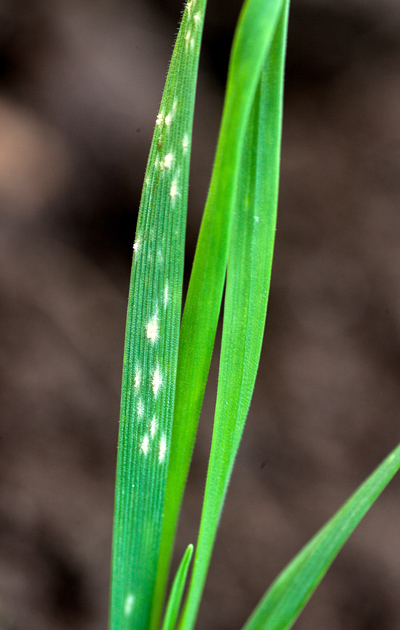Hit mildew early in late-drilled winter wheat crops
21st January 2020
Powdery mildew infection can be particularly severe in late-drilled winter wheat and growers may need to consider a specific fungicide at the T0 spray timing to limit its impact on yield this spring.
After an extremely wet and challenging autumn, the area of winter wheat crops sown later than the end of October is likely to increase on many farms as growers continue to grab drilling opportunities as and when they arise.
ADAS cereal disease expert Jonathan Blake says these wheats will be more susceptible to severe mildew infection, which can slow crop growth and reduce green leaf area significantly.
“Given the right conditions and where you have a mildew-susceptible variety drilled late, the disease can develop quickly and start to reduce the potential storage capacity of the crop.
“In these situations, and where an epidemic is allowed to persist, yield losses of up to 1t/ha are possible so early mildew control could certainly bring some benefit this year.”
This may lead to growers using a specific mildewicide at T0 to protect against mildew in high risk situations, complimenting other fungicides aimed at septoria or rusts.
Product loss
Following the cease in sales of fenpropimorph, there are just two specific mildewicides on the market for this purpose, which are Cyflamid (cyflufenamid) and Talius (proquizanid).
“Both are mostly protectant, but cyflufenamid probably has the edge between the two actives as it has some curative activity [against mildew already established in the crop],” notes Mr Blake.

Certis technical specialist, Geoffrey Bastard.
Certis regional technical specialist Geoffrey Bastard adds that backward winter barley crops may also need an early specific mildewicide, particularly as barley plants have less ability to compensate for low tiller numbers later in the season.
However, with mildew favouring mild and dry weather and the winter having been very wet so far, inoculum levels in both wheat and barley have been suppressed and are currently low.
“It’s a case of monitoring conditions and susceptible crops, then assessing the need for any specific treatment as we approach the T0 timing.
“The most important consideration in the short term is ensuring that those crops have adequate nutrients, which will minimise plant stress and give plants the best possible start this spring,” stresses Geoff.
Key points – Early mildew control in cereals
- Late-drilled, stressed winter wheats more susceptible
- Struggling winter barley crops also at risk
- Severe infection can hit yield potential
- Use early crop nutrition to reduce plant stress
- Consider specific mildewicide at T0 where risk is high
- Cyflufenamid has best curative and protectant activity

